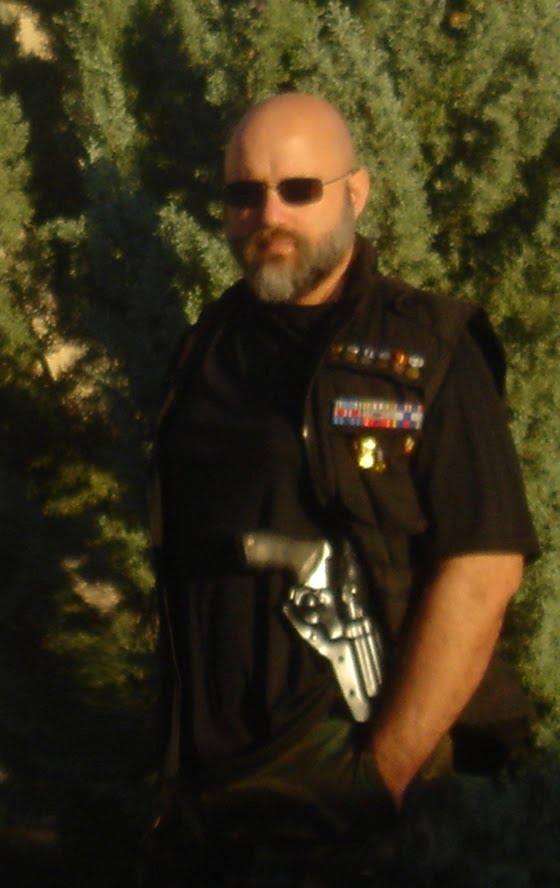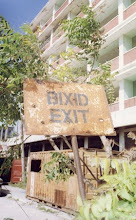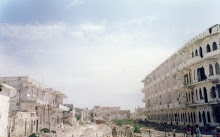How many times have we gone laughing to the brink?
The brink is that jumping off point, Cold Warriors know so well. But we aren’t the only ones who know where to find that cliff – and what it feels like to stand there. There are children – now adults – who remember practicing drills at school, meant to save them in the event of a Soviet first strike.
But remember, the Soviet and American leadership had a strange policy during all those years. Based on the idea that two equally well-armed nations with reasonable people in charge, would always err on the side of caution, Mutually Assured Destruction (MAD) kept the radioactive fallout and nuclear winter scenario from becoming reality during several decades from the 1950s until the Soviet Union collapsed in 1991.
How close did MAD bring us? Cuba immediately comes to mind – 13 days in which the Russians continued to assemble the capability to launch nuclear missiles from Cuban soil. Perhaps one or two more days would have brought about the nuclear exchange everyone dreaded. The Soviets backed down that time, but there were many other incidents which could have been interpreted the wrong way.
April 11, 1950 a U.S. Air Force bomber was three minutes out from Kirtland AFB, carrying a nuke and four spare detonators. It crashed into a mountain. According to the DOD, all components were recovered. All 13 members of the crew died. In July of the same year, a USAF B-50 flew into the ground carrying a nuke and on Nov. 10, another B-50 jettisoned a Mark 4 at 10,500 feet. The blast scattered 100 pounds of depleted uranium over the St. Lawrence River.
The simple errors and failures continued through the 50s – in some cases resulting in the loss of weapons – in others resulting in environmental contamination, evacuations and deaths. One bomb was even lost near Tybee Island, Georgia in the Wassaw Sound and never found.
Even in 1953 the USSR and the United States tested these weapons within months of each other, ratcheting up the tension.
In March 1958, A B-47 accidentally released a nuke after the lock failed. The chemical explosives exploded on impact in a suburban neighborhood in Florence, South Carolina. Radioactive materials were dispersed across the area.
In the 60s, nuclear accidents occurred 19 times including the radioactive gas leak on board the Soviet K-8, November class submarine and the infamous near melt-down on-board the Soviet Hotel-class sub, the K-19. Another two Soviet subs developed serious problems with their reactors. In one instance a B-52 exploded releasing two MK-39 hydrogen bombs. One weapon actually made it through three of its’ four arming steps before parachuting to the ground. Only the fact that the pilot’s safe/arm switch hadn’t been triggered prevented the detonation. The second weapon hit a mud field at about 700 mph and buried itself about 180 feet down.
In the 1970s, another Soviet November Class sub sank while a 10 Kt test at the Nevada Test Site released a plume of radioactive material. And in 1976 an explosion at the Hanford Site in Washington occurred – one year before yet another Soviet sub accidentally released a nuclear warhead. Rumors during the Vietnam War suggest that nukes were loaded onto aircraft on six occasions – some actually in flight toward their targets before they were called off.
In November 1979, the computers at NORAD and ANMCD showed a preemptive nuclear strike by the Soviet Union. Minuteman Missile sites received the preliminary warnings and the entire air defense interceptor force was alerted. Ten fighter aircraft were launched as well as NEACP – the President’s doomsday plane.
But it was just a training tape, which had been accidentally inserted into the computer system.
But then there was the Little Rock incident in 1980 when an Airman conducting maintenance on a Titan II Intercontinental Ballistic Missile dropped a socket wrench causing the missile to blast out of the silo and dropping the W53 warhead onto the ground. Safety devices on board worked, and prevented radioactive contamination. June 30th of the same year, however, another warning was received by U.S. Command centers, but the attack appeared random and was later attributed to a bad computer chip.
The 80s also saw three more Soviet sub accidents and the accidental activation of the Soviet early-warning system. The computers confirmed that several missiles had been launched from American silos, but one Lt. Col. Stanislav Petrov refused to believe it. His training suggested that the U.S. would only launch a massive strike – not the pitiful attack he was witnessing. He reportedly said “when people start a war, they don’t start it with only five missiles. You can do little damage with just five missiles.”
Or there was Able Archer – an exercise held in November 1983 in which the Soviets came within hours and maybe minutes of launching a pre-emptive nuclear strike on both the U.S. and Western Europe. At that point, a Soviet submarine could have launched a nuke, which had a little over 400 seconds flight time to high-value targets off-shore.
Even in 1995, a joint sounding-rocket project between the U.S. and the Norwegians was misinterpreted as a Trident “blinding” missile – a weapon which would blind Russian radars. President Boris Yeltsin said the next day that he had activated his “football,” for the first time. The “football” is the mobile, briefcase enclosed code device, which travels with the president wherever he goes.
But the most important thing to understand in all of this, is that we have had decades of brinksmanship with the Russians and yet in all that time, as a reasonable people we have been able to take the time and not jump to the one deadly conclusion, which could have ended everything. Instead, smart, careful, methodical people in both nations have prevented WW III over and over – sometimes at the last minute.
The power of nuclear weapons is variable. It can be scaled down to a weapon designed to take out a highway overpass, or scaled up to 57,000 times the power of the weapon we dropped on Hiroshima. That device, which wasn't anywhere near as sophisticated as modern-day technology, killed 140,000 people. And allegedly, there are modern Russian scientists currently assisting in Iran.
So the question is this: What happens with a nuclear Iran? Will there be reasonable, careful, methodical people at those switches when things get tense? Or, will there be individuals using their religious beliefs to decide whether or not to launch?
And what kind of launch will it be? With religion in control of those weapons, does it not seem likely that the government of Iran will use the largest possible devices, like the layer-cake weapons developed by the Russians – in the greatest number – and with the widest possible methods of deployment to ensure success and obliterate Israel?
And doesn’t it even seem obvious that Israel will attempt a preemptive strike based on the truth that they see: that the Iranian government, fueled by religious fervor, will eventually launch such a strike against them.
In such a scenario, there is no MAD theory at work. There’s no tense balance on the brink for decades – there’s no cool, disciplined, well-trained individuals checking first before they launch. There's only immediate engagement. But what if the Iranians do develop their nuke capability, and are able to sit on it for a while? How long will it be before one of the IEDs in theater with our soldiers, is more than it seems – an Iranian tactical nuke, provided to insurgents in Iraq or Afghanistan, by that rogue, religious government.
Deliver such capabilities into the hands of extremists, and they will be extreme – in a permanent kind of way. This isn’t complicated.
It could be, however, the beginning of the end.


















No comments:
Post a Comment